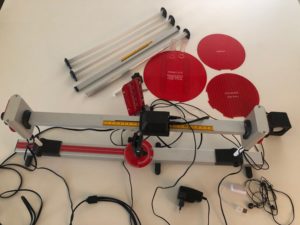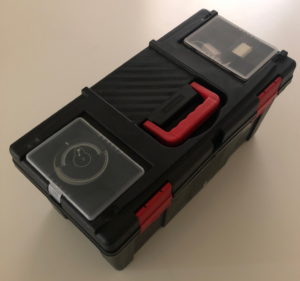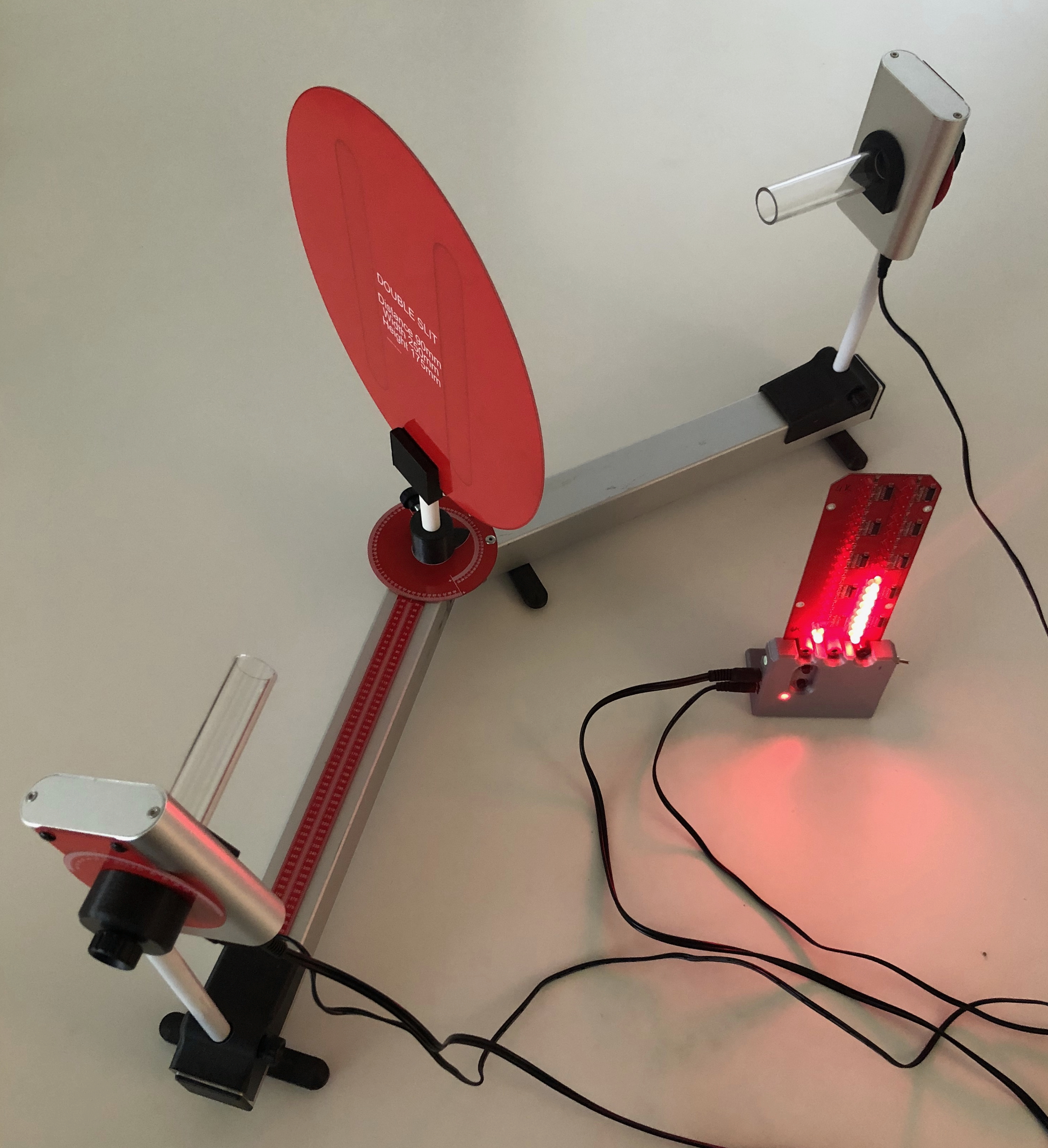Characteristics :
- Bench length: 1m. The angle between the two 50 cm halves is variable and may be read in a large goniometer.
- Frequency: 10 GHz, wavelength 3 cm, vertical polarization in the normal working position. The polarization may be varied in a full 90° angle.
Transmitted power: less than 5 mW. - Special innovative tubular dielectric antennas are of high directivity and minimum overall encumbrance.
- Radiation safety: microwave radiation is well below established safety standards for general public environment, like ANSI C95.1-1991 of USA and NRPB-11 of United Kingdom.
- The bench, the slits and the vertical holders are precision metallic or plastic elements which assure easy positioning and sliding of the various “optical” elements and accessories.
- Rotating mounts: the transmitter and receiver rotate through a full 360°, an important feature for experiments in which the polarization must be studied.
- Receiver: super-heterodyne, I.F.= 200 MHz, manual sensitivity control in a range of 1:20.
- Output indicator: two channels, each with 20 LED and audio output signal, useful in public or classroom demonstrations.
- Power supplyied by a single 12 V d.c. plug-in device .

Demonstrations and experiments
- Many experiments, demonstrations and studies of the optical properties of microwaves and of their interactions with matter are allowed by this device.
- Measurements of absorption of various materials: human hand, sheets of perspex, polycarbonate, nylon, pvc, wood, cardboard, masonite, concrete etc.
- Law of reflection by a conducting surface. As an example a metallic mirror supplied as an accessory shows that a surface corrugation of a small fraction of the wavelength does not disturb the behavior of the reflector.
- Refraction: sharp focusing of the microwave beam by a paraffine lens.
- Polarization: determination of the direction of the electric field vector by an array of close parallel (spaced less than half wavelength) metal wires. Malus-Law (square-cosine).
- Reflection by a dielectric surface. Transmission as a function of the polarisation and of the waveguide orientation.
- Brewster angle and polarisation of the reflected and transmitted wave. Fast determination of the refractive index of various materials at the frequency of 10 GHz.
- Standing waves by means of a movable dielectric slab normal to the direction of propagation. Precise measurement of the wavelength.
- Young double slit diffraction experiment with the detection of maxima and minima in the diffraction pattern. Measurement of the angles. By shutting up one of the slits (for example with the hand) the signal disappears also in the zero-th order strong maximum.
- Guided waves. Rectangular and circular metallic waveguides of various dimensions and their properties. Cut-off dimensions. Polarization properties.
- Measurement of the electric field distribution inside a rectangular slotted metallic waveguide an a special diode probe. It is possible to determine the minima and maxima of the voltage standing waves of the wavelength of the electromagnetic field inside the guide, of the phase velocity which is always greater then c.
- Dielectric waveguides of various materials: PVC, acrylic, and different shapes. Strips of various width and thickness, rods, square, tubular. Demonstration of the absence of cut-off dimensions. Attenuation.
- Evanescent wave in a dielectric waveguide. Measurement of the exponential decrease of the intensity vs. the distance from the guide by means of a diode probe, a micrometric translation stage and a millivoltmeter.
- Fabry-Perot interferometer and precise measurement of wavelength. Sliding the moving mirror an high contrast of the fringes is easily found, which allows the precise determination of the positions of the minima and consequently of the wavelength.
- Faraday effect. A neat demonstration of the rotation of the polarization plane, which may reach a giant 90°, by a small ferrite rod in a magnetic field of the order of tens of Gauss.
All components are shipped, and may be stored inside a plastic box

old version: https://www.labtrek.it/proMWuk.html

